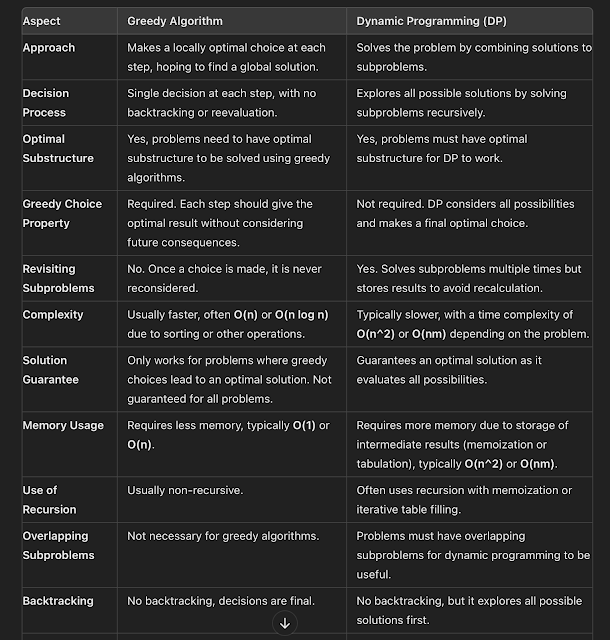Greedy Vs Dynamic Programming Algorithms
Greedy approach and Dynamic programming are two different algorithmic approaches that can be used to solve optimization problems. Here are the main differences between these two approaches:
Greedy Approach:
- Approach:The greedy approach makes the best choice at each step with the hope of finding a global optimum solution.
- Decision Process:It selects the locally optimal solution at each stage without considering the overall effect on the solution.
- Optimality: Guaranteed to produce optimal solutions only for certain problems with the greedy-choice property and optimal substructure.
- Efficiency:Greedy algorithms are usually simple, easy to implement, and efficient, but they may not always lead to the best solution.
- Example Problems: Coin Change Problem (specific denominations), Kruskal’s Algorithm for Minimum Spanning Tree, Huffman Coding.
Dynamic Programming:
- Approch: Dynamic programming breaks down a problem into smaller subproblems and solves each subproblem only once, storing its solution.
- Decision Process: Considers all possible decisions and combines them to form an optimal solution, often using a bottom-up or top down approach. It uses the results of solved subproblems to build up a solution to the larger problem.
- Optimality: Always produces an optimal solution by considering all possible ways of solving sub-problems and combining them.
- Efficiency: Can be slower and use more memory due to storing results of all sub-problems (memoization or tabulation).
- Example Problems: Fibonacci Sequence, Longest Common Subsequence, Knapsack Problem.
- Greedy algorithms are fast, memory-efficient, and easy to implement but may not always provide the optimal solution.
- Dynamic programming guarantees an optimal solution by considering all possible sub problems but is typically slower and more memory-intensive.



Comments
Post a Comment